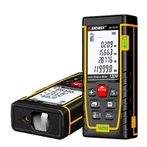How many parts does an ordinary optical microscope consist of?
(1) Mirror base: The horseshoe-shaped or circular part at the bottom of the microscope serves to stabilize and support the mirror body.
(2) Mirror column: a short column standing upward from the mirror base. The upper part is connected to the mirror arm, and the lower part is connected to the mirror base, which can support the mirror arm and the stage.
(3) Mirror arm: The part bent into a horseshoe shape is easy to hold. There is an inclined joint where the lower end is connected to the mirror column, which can tilt the mirror arm for easy observation.
(4) Stage: It extends forward from the lower end of the mirror arm and is a platform for placing specimens. There is a round hole in the center, called the light hole. There is a mover on the table (the old-fashioned one has a press clamp on the left and right) to fix and move the specimen.
(5) Lens barrel: The cylindrical part connected to the top of the mirror arm. Some microscopes have a tube inside the barrel, which can be lengthened appropriately. The general length is 160-170 mm. The upper end of the lens barrel is equipped with an eyepiece, and there is a rotatable disk at the lower end, called the objective converter (or objective rotating disk), which is fixed at the lower end of the lens barrel and is divided into two layers. The upper layer is fixed and the lower layer can rotate freely. On the converter There are 2 to 4 round holes for installing low- or high-power objective lenses of different magnifications). Its function is to protect the optical path and brightness of imaging.
(6) Adjuster (also called adjusting screw): There are two rotatable screws on the mirror wall, one large and one small, which can move the lens barrel up and down to adjust the focal length. The large one is called the coarse focus screw, which is located above the lens arm and can be rotated so that the lens barrel can move up and down to adjust the focal length. The lens barrel can be raised and lowered quickly and is used for focusing low-power lenses; the smaller one is called the fine focus screw. Located below the lens arm, its movement range is smaller than the coarse focus screw, and the lens barrel is raised and lowered slowly, allowing fine adjustment of the focus.
(7) Stage: a metal platform extending forward from the mirror arm. Square or round, it is where slide specimens are placed. There is a light hole in the center, and there is an elastic metal press clip on the left and right sides of the light hole to hold the slide. More advanced microscopes often have a propeller on the stage, which includes a clip clamp and a propelling screw. In addition to clamping the slices, it can also move the slices on the stage.
Eyepiece: Mounted above the lens barrel, it consists of two sets of lenses. The function of the eyepiece is to magnify the inverted real image formed by the objective lens into a virtual image. The eyepieces are engraved with symbols such as 5×, 8×, 10×, 15×, 25×, etc. to indicate the magnification. The magnification of the object image of the specimen we observe is the product of the magnification of the objective lens and the eyepiece. For example, if the objective lens is 10× and the eyepiece is 8×, the magnification of the object image is 10×8 = 80 times.
A short hair can be installed on the diaphragm between the two lenses in the eyepiece as a pointer to indicate the material to be observed.
Objective lens: It is installed in the hole of the objective lens converter at the lower end of the lens barrel. A general microscope has 2 to 4 objective lenses. Each lens is composed of a series of compound lenses. There are also magnification marks on it, such as 4× , 10×, 40× and 100×. 4× and 10× objective lenses are low-power lenses, 40× is a high-power lens, and 100× is an oil lens. Low-magnification lenses are often used to search for objects of observation and observe the entire specimen, high-magnification lenses are used to observe certain parts of specimens or finer structures, and oil lenses are often used to observe the finer structures of microorganisms or animals and plants. Reflector: It is a device for obtaining light source during microscope observation. It is located in the center of the microscope base. One side is a plane mirror and the other side is a concave mirror. Rotate the reflector to allow outside light to shine through the collector onto the specimen. When using, use a flat mirror for strong light and a concave mirror for weak light.






